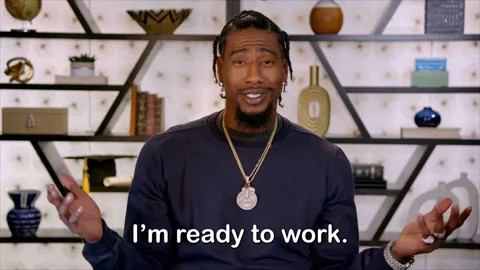You’ve finished school, you’ve gained tons of valuable knowledge, and you’re ready to join the workforce!

But now that you're in the middle of your job you realize…most of the theory you’ve learned doesn't help you get the job done! And to be honest, you’ve forgotten quite a bit of it anyway.

Don’t despair — these 5 highly effective strategies will allow you to acquire new knowledge and skills while working!
What is Active Learning?
Active learning is an umbrella term for a learning style in which you as an employee (or student) engage with the task at hand and gain practical experience. You're actively involved instead of passively absorbing information.
Or to quote the "fathers" of the term, Charles Bonwell and James Eison:
Active learning is a method where students are actively or experientially involved in the learning process.
Put simply, it's learning by doing. You can compare it to hopping on a bike to learn to ride it, instead of simply reading about cycling.

There are plenty of active learning strategies originally designed for the classroom that you can easily transfer into the workplace!
Strategy 1: Buddy Programs & Peer Learning
In a Nutshell 🥜
In a buddy program, you work together with your peers to solve problems or answer questions.

How it Works— Example 🛠
You and a bunch of coworkers are struggling with a new and complicated software you all have to use. Get together in group sessions where you share your experiences, ask questions, and practice the software in a safe environment.
In any group, there will be a mix of experience so some of your coworkers may have answers to your questions, while you can offer a workaround for their problem. You can hold these sessions both in person or virtually.
Variation 🔶🔷
Online discussion boards are another way to engage in peer learning.
A lot of companies use communication tools like Slack or virtual whiteboards like Mural that enable online discussions among coworkers. It's ideal to get immediate feedback that you can actively apply to whatever you are working on.
Strategy 2: Learning by Teaching
In a Nutshell 🥜
Learning by teaching goes a little further than an informal buddy program.
Here, you immerse yourself into a topic, and then, instead of locking that knowledge away in your brain, you immediately put it to use and prepare a lesson or presentation for your coworkers.

How it Works — Example 🛠
You just started your career in HR and have to get up to speed with adult learning methodologies. Once you have a good grasp of the topic, prepare a virtual or in-person "lunch & learn", where your peers can probe you and ask questions!
It will allow you to repeat, reinforce and retain what you've learned. Invite more experienced coworkers so they can point out gaps or errors in your presentation, and you can keep on learning.
Variation 🔶🔷
If you don't feel comfortable presenting in front of a crowd, ask your company if you can write an article or blog post for their intranet, or record a video with tools like Loom, where you share what you've learned and ask for feedback.
Strategy 3: Real-life Case Studies
In a Nutshell 🥜
Case studies are descriptions of challenges based on real-life scenarios from the past or present. The idea is that you use your theoretical knowledge to come up with a potential solution in a safe setting.

How it Works — Example 🛠
Ask a more experienced coworker or your manager to share a business problem they had to solve, and that you might encounter yourself at some point.
For example, take the case of an actual client who has consistently asked for expensive modifications to a product your company is offering. In theory, the client has to pay extra, but that might risk losing this important customer. What would you do?
After digesting the case study, you brainstorm solutions, or examine facts, all without the pressure to present your solution to the client. Instead, it prepares you for similar scenarios in the future.
Strategy 4: Roleplays
In a Nutshell 🥜
Roleplayingis a useful technique for you if you have to interact a lot with customers. You and one or more coworkers take on specific roles and act out a scenario or challenge you're likely to face when doing your job.

How it Works — Example 🛠
Ask a seasoned coworker from sales or customer service to play a tough client in a mock phone or video call. They have been through it, so a sales agent or customer service manager will be able to give a realistic impression of a demanding client.
Explore how you react when put on the spot. Do you get defensive? With the right people joining, roleplaying provides a comfortable environment for you to face numerous scenarios to make mistakes, and receive actionable feedback.
Variation 🔶🔷
If you work in a bigger company with a learning & development department, ask them if they have online modules including simulations. They're more artificial than roleplays, since the customer isn't a human but an animated avatar with limited answers.
Strategy 5: Job Shadowing
In a Nutshell 🥜
Job shadowing pairs you up with a coworker who is highly skilled in an area where you need development. You join them in "business as usual" situations, and quietly observe and take notes in the background.

How it Works — Example 🛠
You landed your first job in sales and want to experience a typical sales conversation to learn how it's done.
Ask a senior sales agent to bring you along on a phone or video call with a potential client. Your coworker can introduce you as an assistant who takes notes — a common practice.
Resist the urge to chime in, just listen and learn. Afterwards, sit down with your coworker to debrief. Ideally, you'll write a recap of the call to better remember what you've learned.
Quiz
You work in inbound marketing and need to learn a software to track deals. Which active learning strategy makes the most sense?
The Benefits of Active Learning
 Photo by Jason Goodman on Unsplash
Photo by Jason Goodman on UnsplashNeed to convince your manager to support your active learning strategies? Share these tangible benefits with them:
Active engagement — Since you engage hands-on, the learning "sticks", and you'll remember and understand the topic or material much better.
Critical thinking — Working on real-world problems and scenarios allows you to develop innovative thinking and problem-solving skills.
Skills development — Most active learning strategies require you to involve your coworkers, which helps develop valuable skills such as collaboration and communication.
Confidence boost — Encouraging feedback from your peers will make you more confident, and confident employees are more likely to embrace new challenges!
Positive experience — Active learning is fun, and what manager doesn't want a happy team? Allowing you to grow is a real sign of appreciation.
Take Action

This Byte was a passive learning experience! 😄 Here 's how to get started with active learning in the workplace:
Your feedback matters to us.
This Byte helped me better understand the topic.
